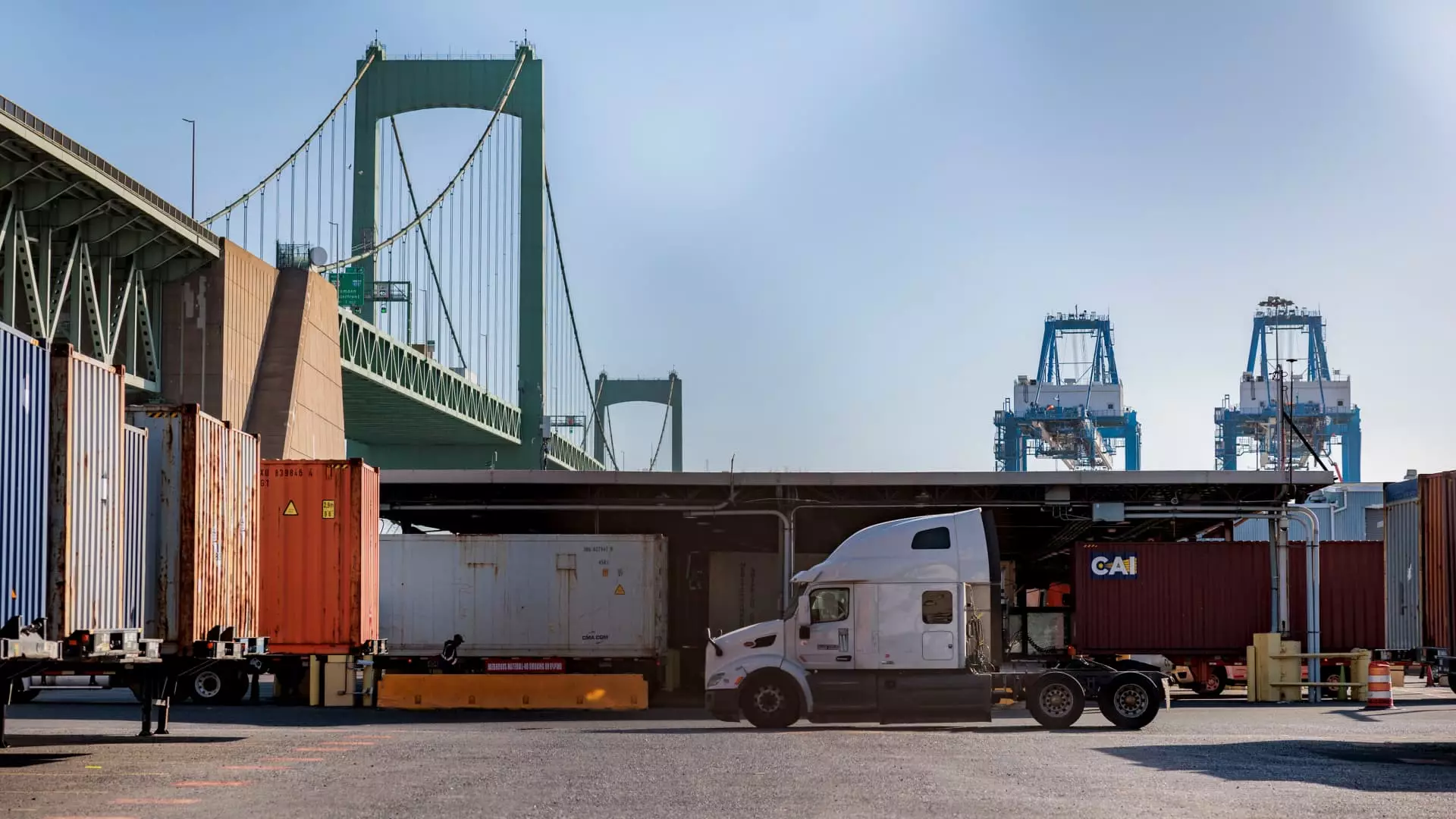As the posturing around tariffs becomes increasingly prominent in U.S. economic policy, many are left questioning the feasibility of replacing income tax with tariff revenues. This notion, which President Donald Trump floated during his campaign and reiterated during meetings with lawmakers, has been met with skepticism from economists and financial experts alike. The complexities surrounding tariff-based fiscal strategies reveal a gap between political ambitions and economic realities that warrants critical examination.
Historically, tariffs served as a significant revenue source for the federal government, particularly during the 19th century, when they comprised a large percentage of total government income. However, as the demands of governance and public spending have evolved, so too has the corresponding fiscal framework. The ever-increasing expenditure needs of a modern government far exceed the capacities of a tariff-based revenue system that once worked in a very different economic landscape.
According to a report from the Tax Foundation, the U.S. government spends approximately 22.7% of its GDP, a massive expansion compared to the 19th-century levels, effectively nullifying the idea that a similar revenue system could sustain such a government. In other words, the mechanistic application of a historical model to a contemporary framework simply doesn’t hold up.
Despite tariff collections amounting to $77 billion in fiscal year 2024, this represents a mere 1.57% of total federal revenue. The reality is that tariffs have not significantly contributed to the federal purse in over seventy years, typically accounting for no more than 2% of total federal revenue annually. This leads experts like Alex Durante to argue that relying on tariffs as a primary tax mechanism is unrealistic. The data indicates that the base from which tariffs can generate revenue is inherently limited; a small group of imports must generate an equivalent to the vast sums currently collected through income taxes.
As Erica York from the Tax Foundation points out, substituting the $2.2 trillion that the IRS collected from individual taxpayers in the 2021 tax year would necessitate “astronomically high tariff rates.” This would not only be impractical but would also alienate consumers, potentially leading them to alter their purchasing behavior significantly in response to rising prices brought on by high tariffs. Subsequently, this consumer shift could constrain the tariff revenue, creating a perilous cycle that ultimately hinders the ambitious fiscal goals laid out by proponents of the tariff-centric approach.
Beyond the arithmetic issues lies the larger question of economic stability and trade relationships. The imposition of tariffs often triggers retaliatory measures from other nations, eroding potential gains and cultivating an adversarial international environment. Following the announcement of new tariffs on imports from Canada and Mexico, for instance, both countries promptly responded with countermeasures, illustrating how quickly tariff strategies can exacerbate trade tensions rather than stabilize them.
Moreover, as the global economy becomes more interconnected, an overly aggressive tariff policy can lead to repercussions that impact not just the targeted nations but the U.S. economy as a whole. Economic experts warn that isolationist strategies could lead to decreased export opportunities and an overall decline in economic growth, urging policymakers to consider more sustainable, balanced approaches to taxation.
The intricate dynamics of tariffs as a potential substitute for income tax reveal profound limitations and risks that cannot be ignored. With the 21st-century economic landscape necessitating substantial funding for government services, it appears that the idea of relying on tariffs as a singular source of federal revenue is not just impractical; it is essentially untenable. Comprehensive tax reform—not merely the reallocation of existing tax structures—is essential for ensuring that fiscal policies align with contemporary economic demands. The path forward lies not in the revisionist thinking of the past but in innovative strategies designed to meet the complexities of today’s economy.

Leave a Reply